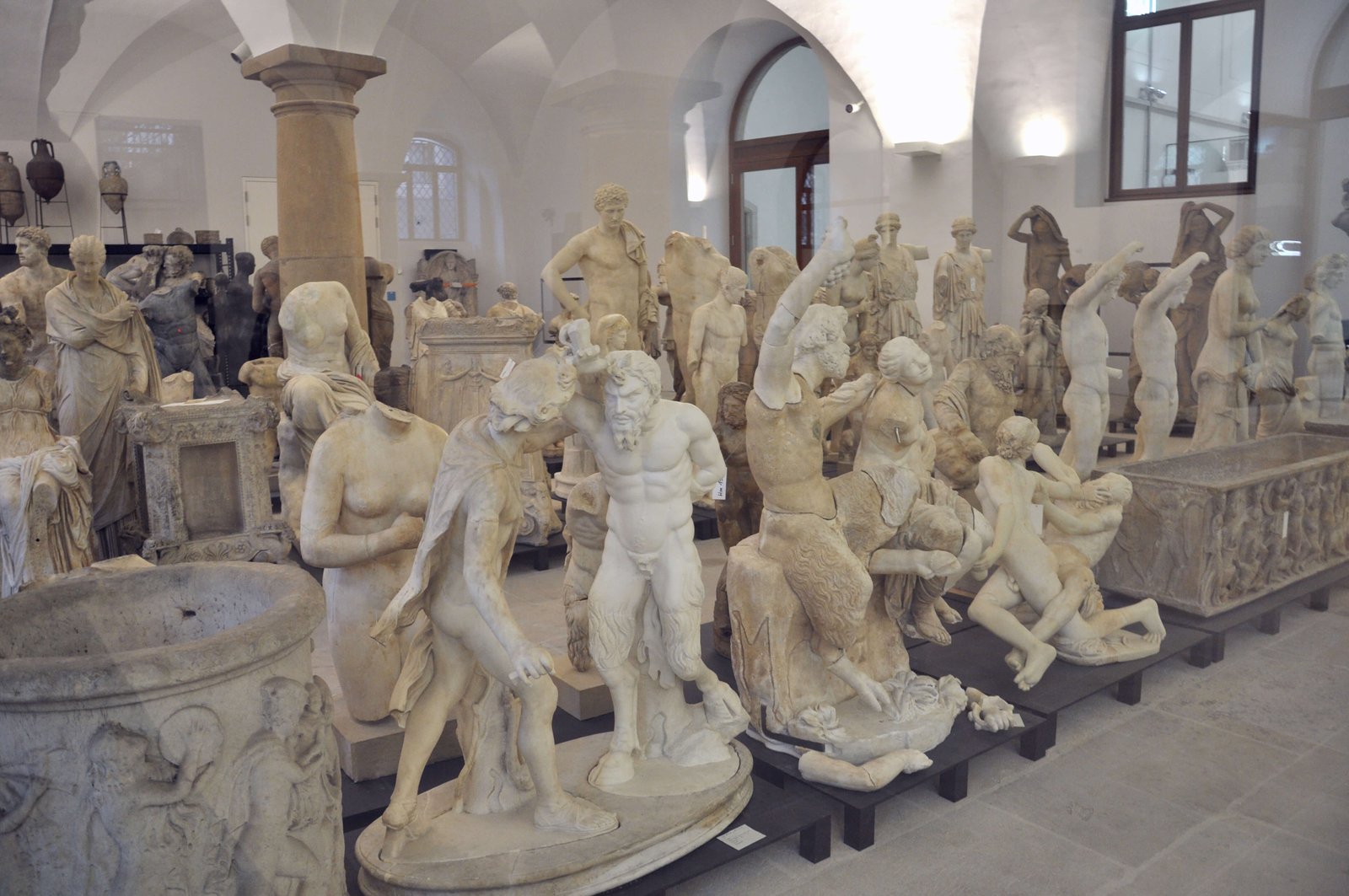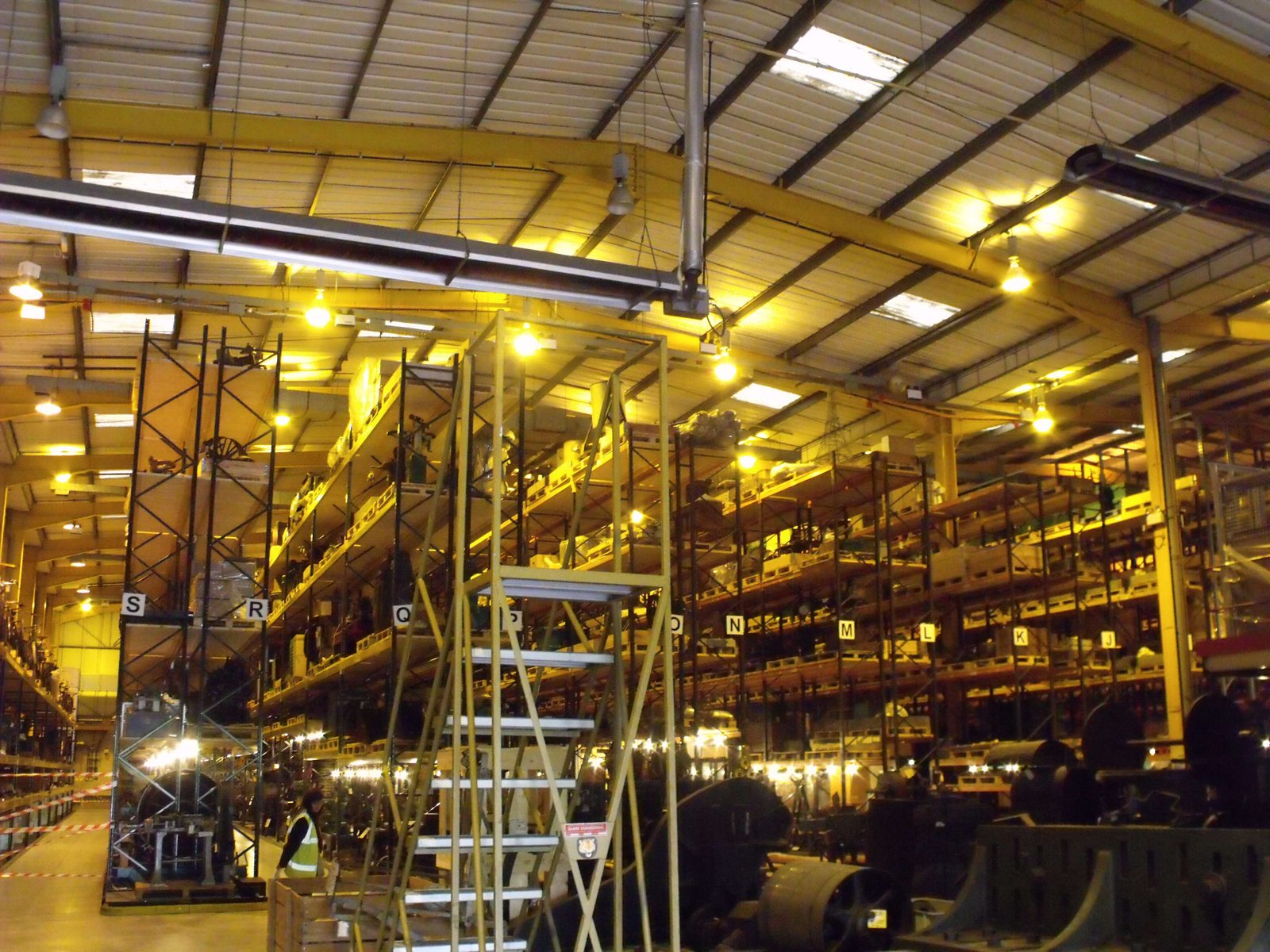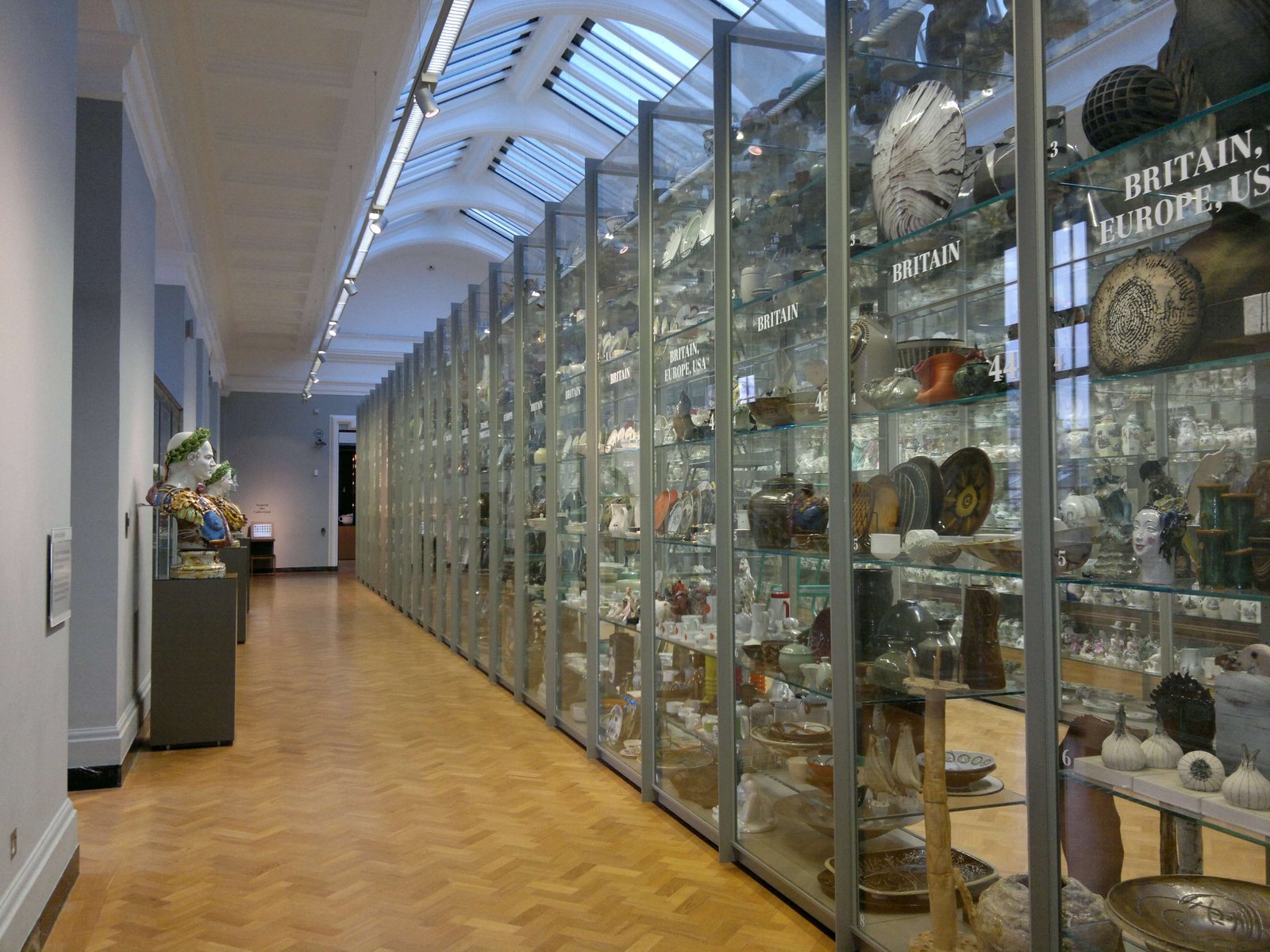Cover image: Visible storage at the Victoria and Albert Museum in London. Photo by Philafrenzy via Wikimedia Commons. (CC BY-SA 3.0).
Somebody recently asked me why most museums display only a small portion of their collections. The obvious answer is that museums have limited exhibition space, but that raises many more questions. Why do museums own so much more than they could ever hope to exhibit? Why do they keep all the objects they don’t use? While I don’t have any museum authority to speak from – my experience with this topic is limited to a summer internship and a museum studies class in college – I’ll do my best to present some of the relevant ideas as I’ve observed them on my art history adventures.
Why museums own so much more than they can display.
This is really the heart of the matter, so let’s start with it. Why do museums keep acquiring objects long past their saturation points? I’m not sure I can fully answer that question, but I think it has a lot to do with the fact that museums aren’t simply places to show art. They also consider themselves places of learning, study and research centers, and repositories of cultural and artistic heritage. Continuing to build their collections is part of fulfilling all these roles. If a museum has the opportunity to acquire something that it feels will further its mission, it will often do so even if it already owns way more than it can display on its walls. Museums also frequently receive donations of wonderful things that they would otherwise be unable to acquire. Who would say no to that?
Some of the factors that can lead to a museum choosing not to display something

I’m sure that museums have many more interesting and significant pieces than they have spots in their galleries, and that lack of available space is the primary reason most objects aren’t regularly displayed. However, below are some of the factors that can go into curators’ decision-making process.
- Duplicates: Museums, especially large ones, often own many examples of similar objects, so they typically only show a select few. Why do museums own many examples of similar pieces? One possibility is that they were donated by a collector who was focused on a very specific type of art, or that the museum itself has chosen to focus on it. Having many similar pieces together in the same institution is great for scholars, but it’s not the best use of space to display all of it.
- More significant works has become available: The older the museum, the more opportunities it’s had to acquire better and more significant artworks. The cream of its crop when a museum first opens might eventually be consigned to storage when more significant works have entered the collection.
- Its attribution has changed: Artworks’ attributions (who is credited with creating them) are not clear cut, and they can change quickly. For example: A museum purchases a painting attributed to Peter Paul Rubens and displays it as a Rubens for a while. Then, some scholar’s work throws doubt onto its attribution, suggesting that it might have been painted by one of Rubens’s assistants, or it’s a copy by a 19th-century artist. Or maybe some people suggest that the painting is an outright forgery. If any of these ideas catch on, the museum might choose to put the work in storage, even if it had previously been considered a masterpiece. A 19th-century copy by an unknown artist is no longer significant enough to command wall space in a museum that has much else to display, and questions about authenticity might be best dealt with by just avoiding the work altogether. In case you’re wondering, the opposite also sometimes happens, and the supposed 19th-century copy turns out to be by the master himself. But I don’t think it’s nearly as common.
- Its reputation has declined: Just like attribution, art historical taste changes over time. For example, the academic artists who were most successful and admired in 19th century are generally not people we spend much time talking about today. A reputation can change dramatically in only a few decades, and once an artist is no longer considered significant, a museum might feel that his works no longer merit wall space. The opposite also sometimes happens, and a piece that’s spent centuries in storage might suddenly be deemed worthy of a place on the walls.
- It isn’t interesting to the public: Museums serve the public, but they also serve the field of art history at large. So, their collections include lots of things that are very relevant to scholars but aren’t too interesting to most museum visitors. These pieces – such as preparatory sketches, damaged works, and small archaeological fragments – aren’t necessarily displayed.
Why museums rarely get rid of anything

Why don’t museums unload objects they don’t display anymore? You have to understand that just because a work isn’t on public view doesn’t mean that a museum doesn’t value it, study it, and display it if the opportunity arises. Even if a museum truly no longer wants an object, though, there’s one big reason it’s unlikely to get rid of it.
Permanently removing an object from a museum’s collection is called deaccessioning, and it’s very controversial. Remember that museums are repositories and caretakers of artworks, as we said before. According to some people, they hold their collections in public trust. This means that they basically collect artworks so that the whole public can have access to them. Getting rid of pieces from a museum collection is considered to run counter to that, particularly since they might end up with private collectors who don’t let the public see them. Museum ethics governs the topic strictly, allowing deaccessioning in only certain circumstances. For example, the funds raised by selling off deaccessioned pieces must be used to buy new objects or care for the current collections. They can’t be used to pay employees, renovate the building, or even keep the lights on should it come to that. Museums deaccession on occasion, but the situation is often contentious. In the past few years, the Detroit Institute of Arts and the Berkshire Museum have both been involved in major deaccessioning scandals. Deaccessioning is a museum ethics issue, not a law, though courts have often gotten involved. Museums don’t want to run afoul of the museum community, so deaccessioning isn’t common, even though it’s not illegal. (See sources related to the deaccessioning debate at the end of the article.)
Deaccessioning rules make sense for the most part, because artworks in museum storage are safer than they would be elsewhere. In museums, they can be properly stored, guarded, and cared for by trained conservators. Even if they’re not on display, they are still more accessible than they would be in private hands. Scholars can still access them, and museums can utilize them for exhibitions whenever they see fit. (This isn’t to say that private collectors never let museums and scholars borrow their art. Some collectors do, and some don’t. But none of them are under any obligation to.) Interestingly, works that are no longer valued at all are still considered safest in museums. I learned from a Met curator that the museum is careful to hold onto every fake medieval ivory carving it finds in its collections in order to prevent them from being passed off as originals again in the future.
Some ways museums have found to show more of their collections

Most works of art are kept in storage when they’re not on display. However, here are some ways that museums have found to show more of their collections to the public.
- Many museums refresh their permanent displays periodically to give more artworks time on the main walls. For example, the Newark Museum has large and significant collections of American and African arts, but not nearly enough space to show all of it. So, the museum revamps these galleries every few years and reopens with a completely different set of works on view. No display is ever truly permanent in a museum, so a trip to storage isn’t necessarily one-way. In the past few years, for example, we’ve seen many works by female and Black artists come out of storage and up to the main galleries.
- Works from the collection often appear as part of museums’ special exhibitions. In fact, such exhibitions are sometimes designed around aspects of a museum’s collection that it wants the opportunity to highlight, display, and further research. I’ve seen often special exhibitions, both large and small, that are derived 100% from a museum’s own collections, including many pieces that are rarely displayed otherwise. These works might also be loaned out to temporarily appear in other museums, either individually or in a group.
- Visible storage (also sometimes called study collections) is a cool way that some museums display more objects to the public. This is usually a no-frills, storage-like setting, where similar objects are grouped closely together in floor-to-ceiling glass cases. You can see an example in the picture above. There aren’t any labels, though some museums have touch screens or audio info you can reference to learn about the objects. In visible storage, you just might see an entire case of those ancient Greek ceramics I mentioned before, placed sitting side-by-side for easy comparison. The best two or three examples are probably out in the main galleries, and the next best dozen or two are here. Because visible storage mimics a real storage arrangement, museums can show a lot this way without needing a ton of extra space. It’s especially effective for small-scale objects like porcelain and glass – less ideal but still useful for paintings and sculptures. The Metropolitan Museum of Art‘s American Wing has the Henry R. Luce Center for the Study of American Art, a great example of visible storage that I really enjoyed exploring. Last time I was there, I saw an entire shelf of this strawberry-colored glassware that I found so very cool. Because wall texts, exhibition design, and most of the other tools museums use to inform their audiences aren’t available in visible storage, these displays rely on their viewers to have some idea what they’re looking at. However, they can be really fun to browse no matter your knowledge level.
- Sources:
- Beatty, Bob. “The Deaccessioning Debate in Museums”. Hyperallergic.com. August 2, 2018.
- Blair, Elizabeth. “As Museums Try To Make Ends Meet, ‘Deaccession’ Is the Art World’s Dirty Word.” NPR.org. August 11, 2014.
- Dudd, Steve. “Museums and their Observers Debate the Field’s Deaccessioning Ethics”. Nonprofit Quarterly. August 6, 2018.



